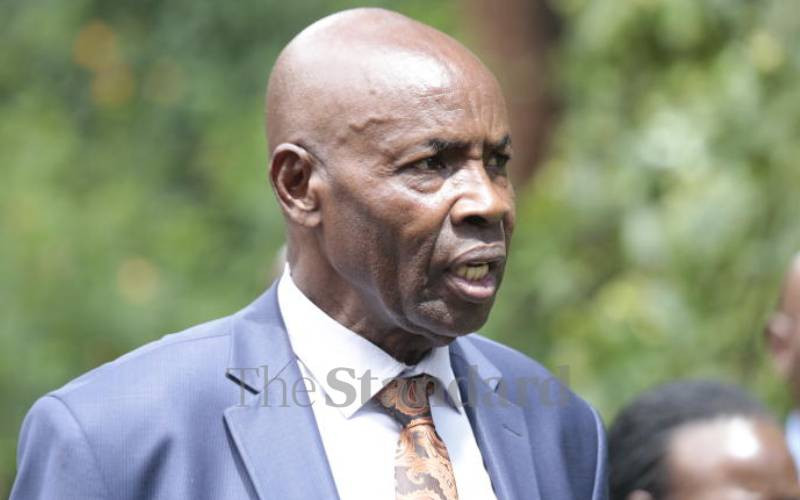By George Gathigi
Kenya: The last 15 years or so have witnessed exponential growth in the post-secondary education institutions and increased enrollment. This demand is not slowing down. At the same time, a number of questions are emerging in higher education instruction. One such question revolves around learning assessment and it’s overall impact on instruction.
One of salient features Kenyan education system is the centrality of examinations as the fundamental modes students’ assessment. Examinations in Kenya constitute critical milestones as the students’ transition from primary to secondary and secondary to post-secondary education.
There is significant change for students’ as they transition from secondary school to university education in terms of instruction and learning assessment.
While the final secondary school examination comprises of subjects taught over four years, university and college education is largely organized in module like units or courses taught over a short period ranging between eight and sixteen weeks.
At university level, assessment is comprehensively done through out the course period using different methods. Assessments vary depending on the different fields of study.
In the Kenyan higher education system, the question of assessment (examination) is critical.
I will largely borrow from my field, Communications, Media Studies and Journalism.
Examinations are important educational tools. They help to evaluate students and assess whether they are learning what they are expected to learn. Secondly, well-designed exams can motivate students and help to structure academic efforts.
For instructors, exams help to gauge the level of success in presenting materials. Finally, exams can reinforce learning by indicating the areas or skills students have not mastered and therefore should concentrate on.
Despite these potential benefits, when not well conceived, examinations as assessment tool are problematic and can fail in their role in the learning process.
Examination is the primary mode of student assessment in Kenyan universities.
In my field, end of semester examination mainly constitute 70% of the overall undergraduate grade and 60% for masters level (as well as some practical courses).
The remaining proportion constitutes of course work. Course work encompasses a range of instructional and assessment tools and tasks expected from students throughout the semester.
They include classroom tasks such as guiding discussion sessions, individual and group presentations; quizzes, (both arranged and impromptu), continuous assessment tests and mid-term exams; class participation and attendance; written assignments such term papers, response papers, and articles; lab and studio work, and field activities.
Stay informed. Subscribe to our newsletter
The 70/30 and 60/40 distribution presents considerable challenge to instruction process and overall learning. The system is rigid.
In most Kenyan universities, unlike places like the US, each instructor must follow the 70/30 or 60/40 prescription regardless of their approach to teaching. This distribution is also heavily skewed towards the final exam, a single event in the course.
Yet, I’d argue that over 95% of learning process occurs during the course work while a huge chunk of assessment in determined over two or three session. In most cases, students are usually undertaking course work until the final exam day.
The exam system make if difficult to appreciate the differences between different courses.
In mass communication, media studies and journalism, majority of the courses taught are practical in nature. Ideally, they should involve heavy workload of practical writing and production work if effectively taught.
Although some constitute introductory theoretical part, ideal instruction would require students to come up with projects such as strategies and texts in the end.
They require extensive field activities. However, instructors constantly find themselves teaching theory for practical courses and assessing them through in-class examination.
There are instances where the examination approach fails to distinguish between graduate and undergraduate instruction. Sit in exams, in my view, can be weak assessment tools for graduate students.
Intensive research oriented written work can be more helpful. On the flipside, academic malpractices such as plagiarism and cheating which may compromise individual research.
To a large extent, there is little distinction between full-time and part-time instruction.
Even where part-time students dominate enrolment. There is no clear model that takes into consideration nuances of part-time learning. Instructors encounter students who are unable, and at times unwilling, to fulfil the requisite course workload.
It is common to find basic class assignments poorly done or unfulfilled. In some cases, students’ desire to undertake their learning responsibility is lacking and instead, the expectation is that instructors should lecture and provide notes.
Engaging in research outside the class has become a struggle as students complain about lack of time (some because they are in full time jobs) in some cases due to constrained institutional resources while others just lack of academic discipline.
The classroom can be challenging place for both instructors and students. Excess enrolment especially in graduate classes overly above optimal instruction class of around twenty students, at most thirty is a big constraint.
An instructor with a large class in an environment where teaching assistants don’t exist cannot assign individual assignments. Group works have therefore become a norm out of necessity. The instructor-student contact is minimal.
The end result is that students’ competences are compromised. With a deficient system, there’s a serious danger of normalization of the same.
Large classes are therefore slowly becoming a norm and different survival-inspired pedagogical approaches are taking root.
A single large exam at the end of learning period makes sense in such situation. Students are generally buying into “exam as end” mentality. It’s all about grades where passing exams displaces comprehensive nature of learning.
There is need to rethink assessment and instruction as a whole. As instructors, we need to engage more in pedagogical discourse. Decentralizing instruction where schools and departments identify best approaches based on their field needs can yield improvements. It’s also important for institutions the trust instructors when they give them responsibility to teach.
This means that only those that are qualified should teach. We should allow and motivate instructors to be creative and to experiment in teaching. This is what leading world institutions do. We can do it too.
Dr. George Gathigi teaches at the School of Journalism and Mass Communication, University of Nairobi.
 The Standard Group Plc is a
multi-media organization with investments in media platforms spanning newspaper
print operations, television, radio broadcasting, digital and online services. The
Standard Group is recognized as a leading multi-media house in Kenya with a key
influence in matters of national and international interest.
The Standard Group Plc is a
multi-media organization with investments in media platforms spanning newspaper
print operations, television, radio broadcasting, digital and online services. The
Standard Group is recognized as a leading multi-media house in Kenya with a key
influence in matters of national and international interest.
 The Standard Group Plc is a
multi-media organization with investments in media platforms spanning newspaper
print operations, television, radio broadcasting, digital and online services. The
Standard Group is recognized as a leading multi-media house in Kenya with a key
influence in matters of national and international interest.
The Standard Group Plc is a
multi-media organization with investments in media platforms spanning newspaper
print operations, television, radio broadcasting, digital and online services. The
Standard Group is recognized as a leading multi-media house in Kenya with a key
influence in matters of national and international interest.








